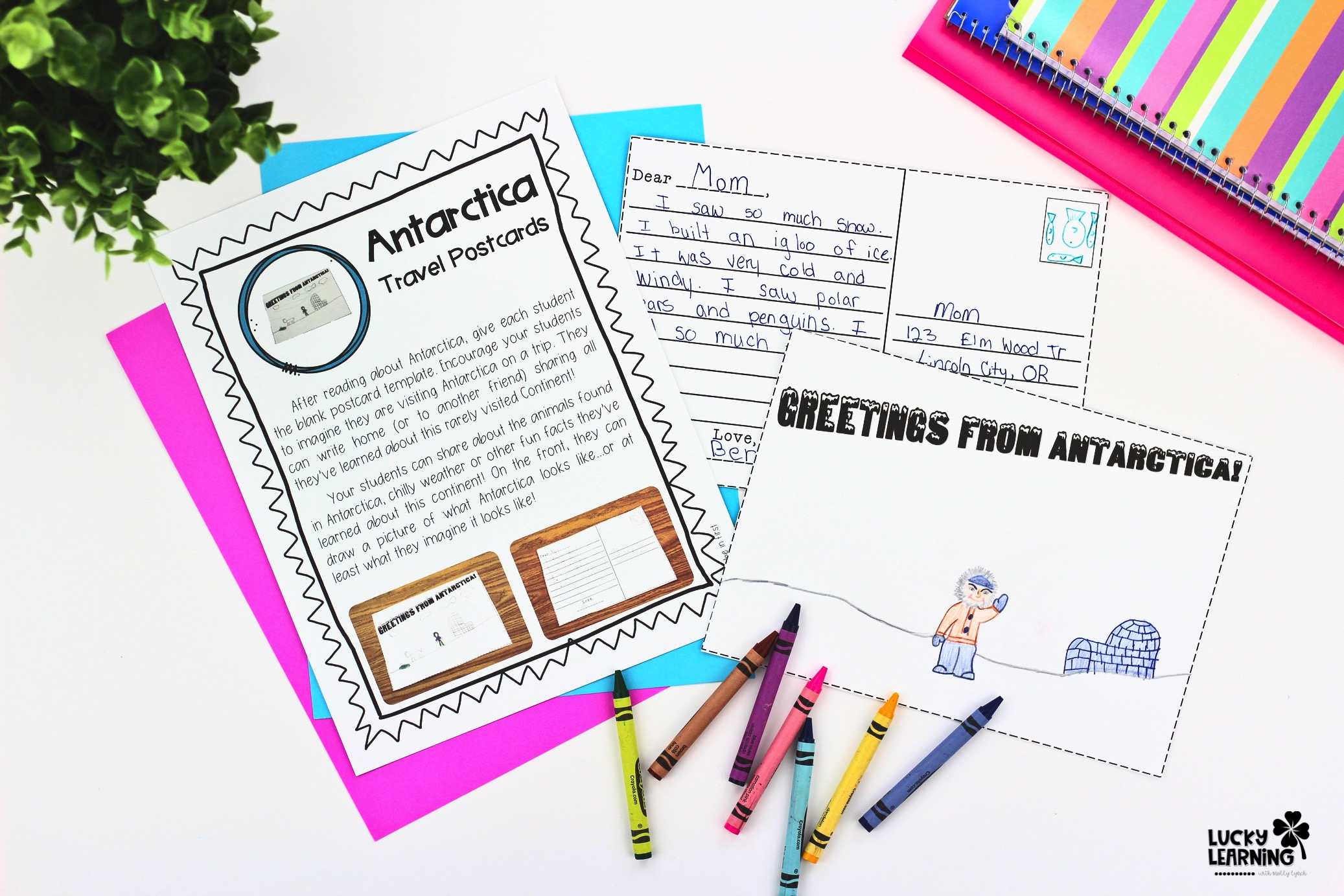I absolutely LOVE teaching about the seven continents to my students. World geography can start at a young age and with the right world geography activities, K-2 students can embark on a journey across continents without ever leaving the classroom!

From crafting to storytelling, there are so many hands-on learning world geography activities. Let’s dive into some exciting activities for each of the seven continents!
North America
First, North America is my home {and home to my students}, so I start there when teaching about the seven continents. I also share fun facts about each continent, including that North America is home to the world’s largest freshwater lake by surface area, Lake Superior!
One of my favorite activities is to teach my students to play Stick Dice – a fun game from the Pomo tribe of California.

If you want to get a little messy, you can make a colorful map using play dough or clay. I encourage students to mold the major landmarks like the Rocky Mountains, the Mississippi River, and the Grand Canyon. This is a great activity to invite parents into the classroom since it can get a little bit messy 🙂
South America
South America has 12 countries and is home to the largest river {the Amazon} and the Amazon Rainforest.
Another activity to showcase South America is to organize a storytelling session about the Amazon Rainforest. Use props like toy animals and plants to make the story come alive. Afterward, students can draw their favorite animals from the story.
I love having kids make a rainstick or maraca craft to add a soundtrack to their story and celebrate the rich music and culture of South America!

Europe
Did you know that Europe houses the world’s smallest country, Vatican City? This is where the Pope, head of the Catholic Church, lives.
Anytime I can add cultural traditions to a lesson, I am game! Host a mini “European Culture Day.” Allow students to pick a country, research its traditions, and share a dance, song, or craft from that country with the class.
I love tying in an art project from the famous painters that have hailed from Europe. These Claude Monet-inspired Water Lilies always make a beautiful display.

Africa
Africa is also rich with traditions and home to the longest river, The Nile. I love learning about so many different African cultures as well.
Have your students create a Banda mask. The Banda mask is a special mask from Africa, made by the Banda people. It often looks like an antelope with long, curly horns. Sometimes, it has both human and animal features. These masks are used in important ceremonies and are made from wood, sometimes decorated with beads or colorful paints. Just like we wear costumes for Halloween or plays, the Banda people wear these masks for special celebrations!

Asia
The next continent is the largest continent, Asia. There are more than 2300 languages spoken in Asia, and it’s a continent full of diversity, art, and culture.

Asia is also known for paper lanterns and cherry blossoms. These beautiful crafts are perfect world geography activities to showcase the world’s largest continent. I love using them to decorate the classroom.
Australia
Australia is known for its Indigenous, Aboriginal people and their rich culture.

Have your students make a boomerang craft or aboriginal clapsticks. In Australia, the Aboriginal people have unique tools and toys that are both fun and important to their culture. One of these is the boomerang, a curved piece of wood that, when thrown correctly, comes back to the person who threw it! Another special instrument is the clapsticks. These are two sticks that are clapped together to make music during dances and stories. Just like we have musical instruments and toys, the Aboriginal people use boomerangs and clapsticks to play and share their traditions.
Antarctica
Finally, there is Antarctica! Not only is it the hardest to spell for your kids, but it is also the coldest, windiest, and driest continent. In addition, it’s the only continent without a native human population.
Conduct a simple blubber science experiment to demonstrate how blubber keeps animals warm in the icy waters of Antarctica. Fill a bowl with ice water and have students dip their hands in. Then, let them try again with their hands covered in a layer of shortening, simulating blubber. Discuss how animals like seals and penguins stay warm in Antarctica. This is a great way to integrate science and social studies!
Another favorite activity is to write a postcard as if you’re visiting Antarctica!

Exploring the continents can be a thrilling adventure for young learners. With these world geography activities, students will not only learn fun facts but also develop a deeper appreciation for the diverse world we live in. Check out this huge, hands-on continent unit with world geography activities galore. Then pack your imaginary bags and set off on a global adventure in the classroom!
Want a FREE fun word search to kick off your Continent studies? Grab it here!





